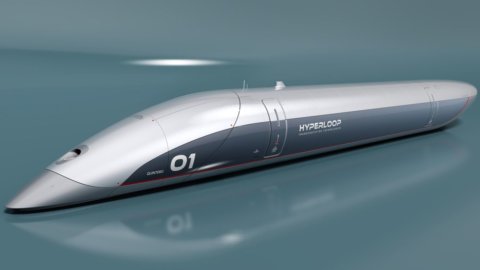The supersonic train lands in Europe. Hyperloop Transportation Technologies, yes active in the US, announces the arrival of the first train traveling at the speed of sound, inside the research and development center in Toulouse, France.
With an internal diameter of 4 meters, the first HyperloopTT system in Europe and the world was designed for both passenger capsules and freight containers and has a 320-metre route, operational from this year. In addition, a second 2019km system, built on pylons to a height of 1m, will be completed in 5,8.
The first two French systems will be used by HyperloopTT and partner companies. The passenger capsule, which is nearing completion at Carbures in Spain, will be delivered to HyperloopTT's R&D department in Toulouse this summer for assembly and integration.
Founded in 2013, HyperloopTT has a team of over 800 engineers, creatives and technology experts – of which around 30 are Italian – and 40 corporate and university partners around the world. HyperloopTT, headquartered in Los Angeles, has offices in Abu Dhabi, Dubai, Bratislava, Toulouse, Contagem (Brazil) and Barcelona. HyperloopTT has signed agreements in the United States (first interstate connection of the Hyperloop train in the United States), Slovakia, Abu Dhabi, the Czech Republic, France, India, Indonesia, Brazil and Korea.
HOW THE HYPERLOOP TRAIN WORKS
The Hyperloop project is a capsule that hovers within a low-pressure structure. As with an aircraft at high altitude, the capsule encounters less resistance. The remaining air in front of the capsule is conveyed towards the rear of the structure using a compressor, which allows incredible speeds to be reached up to over 1.200 km/h and with very little electricity consumption.
The system has been designed with the highest sustainability standards, so as to have a minimum impact on the ground. The entire pipe system is in fact built on pylons, so as to reduce the costs of land acquisition and ensure insulation from climatic and environmental conditions.
The design of the pylons is such as to make the earthquake-proof and self-sufficient structure in terms of energy. Thanks to the solar panels placed along the upper part of the structures and thanks to a sophisticated energy recovery system, Hyperloop is able to produce more electricity than it consumes.




